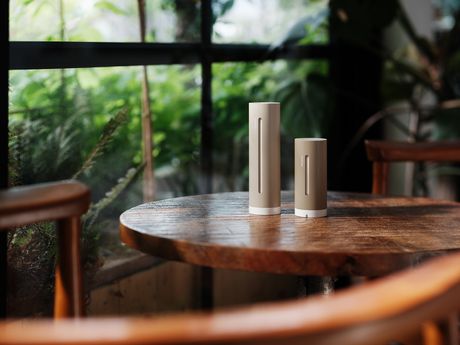
Netatmo presenta la nueva Estación Meteorológica ORIGINAL

Hasta -50% en una selección de productosComprar

The air we breathe inside our homes is often much more polluted than air in the country side. This is especially worrying when we know that this is the place where we spend most of our time. Monitoring indoor air quality is becoming an absolute priority to help us live in healthy environments.
Interior pollutants affect the indoor air quality in your home. They can come in from outside, like particle emissions from automobiles that get inside and load rooms with carbon dioxide, degrading ambient indoor air quality.
Similarly, all combustion produces persistent carbon particles. This is the case with wood fires in chimneys or gas heating. Cooking is also responsible for the concentration of certain aerosols, but much less so than known risky activities like smoking tobacco.
The challenge isn’t just the outside, though. Among the most widespread pollutants, we find formaldehyde—a derivative of formalin—coming from insulation sprays, flooring glue, and certain flooring treatments. Household cleaning products also cause a great deal of interior pollution, with the worst offenders being ammonia and acetaldehyde.
The air inside a house doesn’t renew itself. Without human intervention, it stays confined and the indoor air quality degrades, notably by an accumulation of pollutants that can cause problems. Domestic pollution levels are estimated to significantly lower life expectancy.
The lungs are the first organs in our bodies to suffer from poor air quality. Asthma is a widespread pulmonary affliction and its development seems closely linked to ambient pollution. Pollutants, contained in furniture, for example, can increase the risk of allergies, either by breathing them or by skin contact. Overly polluted air can even cause certain illnesses in otherwise previously healthy people.
Beyond the long-term health effects, our quality of life and well-being are directly affected as air quality deteriorates. Elevated CO2 levels can also cause significant temperature fluctuations in rooms—up to 0.9° F.
Humidity level is also directly linked to interior air quality. If it’s too high, mold and mildew can proliferate in certain rooms. Humid air also favors bacterial growth. Conversely, air that’s too dry can provoke itching and accentuate fatigue. It can damage your walls or floors and encourage dust accumulation.
If pollutants are dangerous, it’s their accumulation that’s problematic. To control ambient air quality and sanitize your home, there are now simple and quick solutions you can use.
Of course, think about letting in some fresh air first! Replenishing ambient air is the best way to reduce the concentration of pollutants and improve your home environment. Each day, preferably in the morning, open your doors and windows to encourage ventilation and prevent crystallization of pollutants.
Aerate rooms twice a day—morning and night, for example—for 15 minutes each time. Even in the winter, such a short aeration won’t cool down your house for too long. The complete renewal of your interior air is well worth a small amount of extra heating.
What should you do when it’s too cold to open the windows? Many essential oils and mixes have been created and tested to improve ambient air quality. In addition to diffusing a pleasant and soothing or stimulating odor, these oils have antiviral, antifungal, and anti-stress properties and can even help boost your immune system.
Different devices exist today that can make life much easier for you. You can invest in a ventilation and air filtration system and in an intelligent solution for measuring the air quality in every room.
The Smart Indoor Air Quality Monitor is a connected device created to help you measure the humidity level, temperature, and CO2 concentration inside your home. This personal assistant is dynamic, analyzing environmental data 24 hrs. a day, identifying problems, alerting you, and allowing you to control the air quality in your house. You can control it directly with your smartphone and consult your real-time data from anywhere.
We spend the majority of our time inside, so we shouldn’t neglect our precious indoor environments. Today, with the right tools, controlling indoor air quality doesn’t take much effort and can help to considerably improve your living environment, so why do without it?